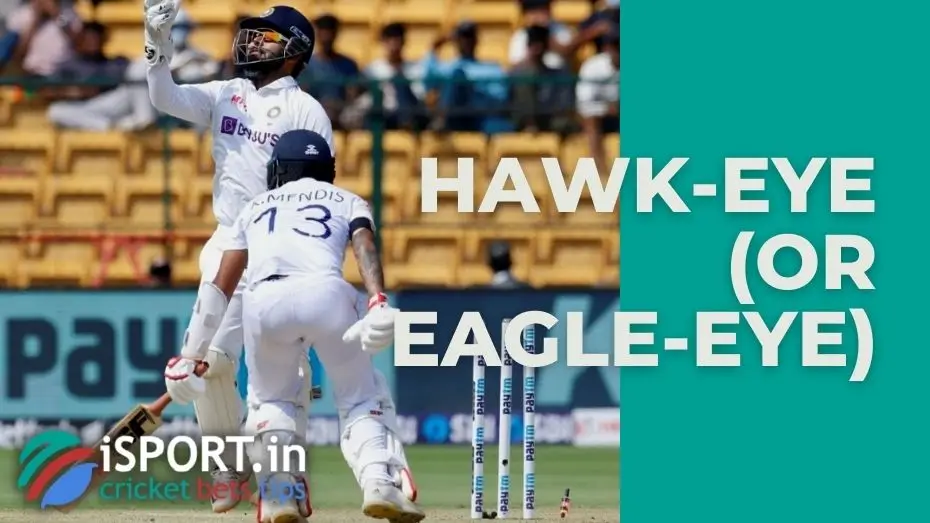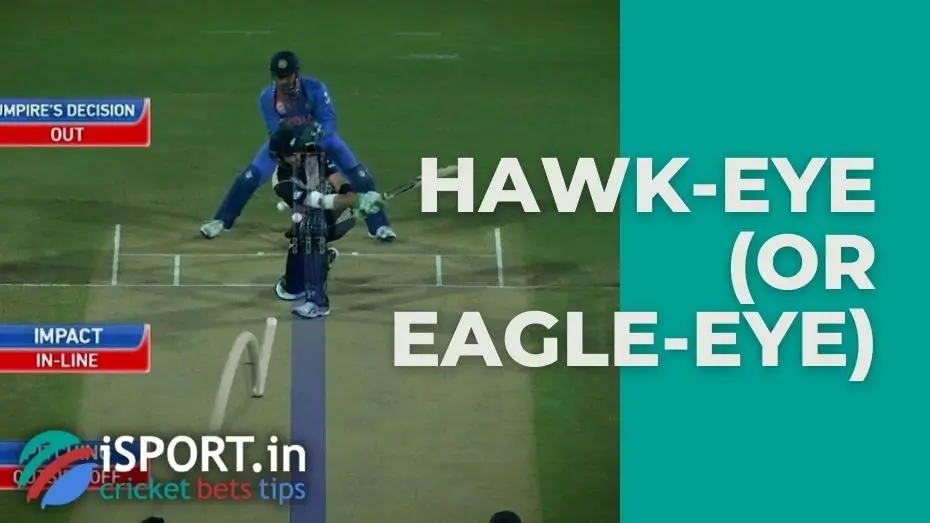Hawk-Eye (or Eagle-Eye)

Hawk-Eye (or Eagle-Eye) is a computer visualization system that is used in both team and single sports, starting with cricket and ending with tennis. The main task of Hawk-Eye (or Eagle-Eye) is to simulate the ball’s trajectory and form a moving image based on available statistical data. The output of the finished trajectory to the screen is called Shot Spot.
The Hawk-Eye (or Eagle-Eye) system was developed in the early 2000s and already in 2001 was tested in cricket competitions as part of the test match between England and Pakistan, which took place at the famous Lord’s Stadium. It is worth noting that the issue of the copyright patent has remained unresolved for a long time. The direct developers of Hawk-Eye (or Eagle-Eye) were Roke Manor Research Limited engineers Paul Hawkins and David Sherry, who filed a patent request in the UK, but subsequently withdrew it. All rights were acquired by Hawk-Eye Innovations Ltd (Winchester, Hampshire), which was bought out a few years later by investors led by Wisden Group. The deal was particularly insisted on by a member of the famous American business dynasty, Mark Getty, who intended to expand his influence in various sports gradually. However, he did not stay at the head of the company for a long time, and already in 2010, it was acquired by the Japanese giant SONY.
Hawk-Eye (or Eagle-Eye) works based on data provided by six (less often seven) high-speed cameras, which are pre-installed on the lower roof of the sports complex that hosts the competition. The cameras track the projectile’s movement from different positions and at different angles, after which the system analyzes the received frames, highlighting groups of pixels that coincide with its position at each individual moment of time. Express analysis and superimposition of frames on each other with the simultaneous alignment of the trajectory is carried out, which allows not only to restore the path made by the ball, but also to simulate its most likely continuation. Then the resulting video is triangulated and combined to create a 3D image.

Interestingly, according to the data that are regularly published on the official website of Hawk-Eye (or Eagle-Eye), the system collects much more information than it gets into the final summary. Thanks to the integration with the internal information base and extensive archiving capabilities, parallel processing of statistical data takes place, allowing to generate automatically not only the most likely forecasts for specific players, but also to compare a huge array of indicators. Nevertheless, the most important information blocks are displayed on the screen, which viewers can get acquainted with in the mode as close to real time as possible.
The first tests of the Hawk-Eye (or Eagle-Eye) turned out to be so successful that soon sports functionaries began to think about implementing the visualization system on an ongoing basis. In 2009, it began to be used to check refereeing decisions, and a few seasons later, it found its application in football.
As practice has shown, Hawk-Eye (or Eagle-Eye) is indispensable in determining the facts of violation of the game’s rules. The system is programmed in such a way that it can determine not only the fact of a short flight/over flight of the ball, but also predict the most likely change in its trajectory in the event of a collision with a player or an inanimate obstacle on the field. Already in the 2008-2009 season, Hawk-Eye (or Eagle-Eye) began to be used to review refereeing decisions, that traditionally cause the greatest dissatisfaction among cricketers – LBW (Leg before wicket).
It is known that the third umpire can independently track the trajectory of the ball until it comes into contact with the batsman but is unable to predict and analyze the direction of the subsequent bounce. It is this function that the Hawk-Eye (or Eagle-Eye) system has adopted, which allows you to determine with maximum accuracy whether the ball has touched the wicket. And although disputes about the quality of the generated image applicable to LBW episodes are still ongoing, it is the Hawk-Eye (or Eagle-Eye) that remains the main tool for resolving controversial issues in such cases. Three main criteria are taken into account:
- The place where the ball landed;
- The point at which it came into contact with the batsman;
- Expected trajectory change after contact.
In addition, the coverage of the playing field allows you to analyze the game of bowlers, assessing the feed rate, as well as such aspects as Line, Length, Swing and so on. At the end of the over, information on all six innings is displayed on the screen, which in turn makes it possible to draw preliminary conclusions about the success of his actions.
A less noticeable but extremely valuable function of Hawk-Eye (or Eagle-Eye) is the accumulation and systematization of data that can be used in post-match analysis.
This is interesting: the final trajectory generated by Hawk-Eye (or Eagle-Eye) is not one hundred percent error-free, but the 3.6 mm error allows it to be considered as unbiased as possible.
